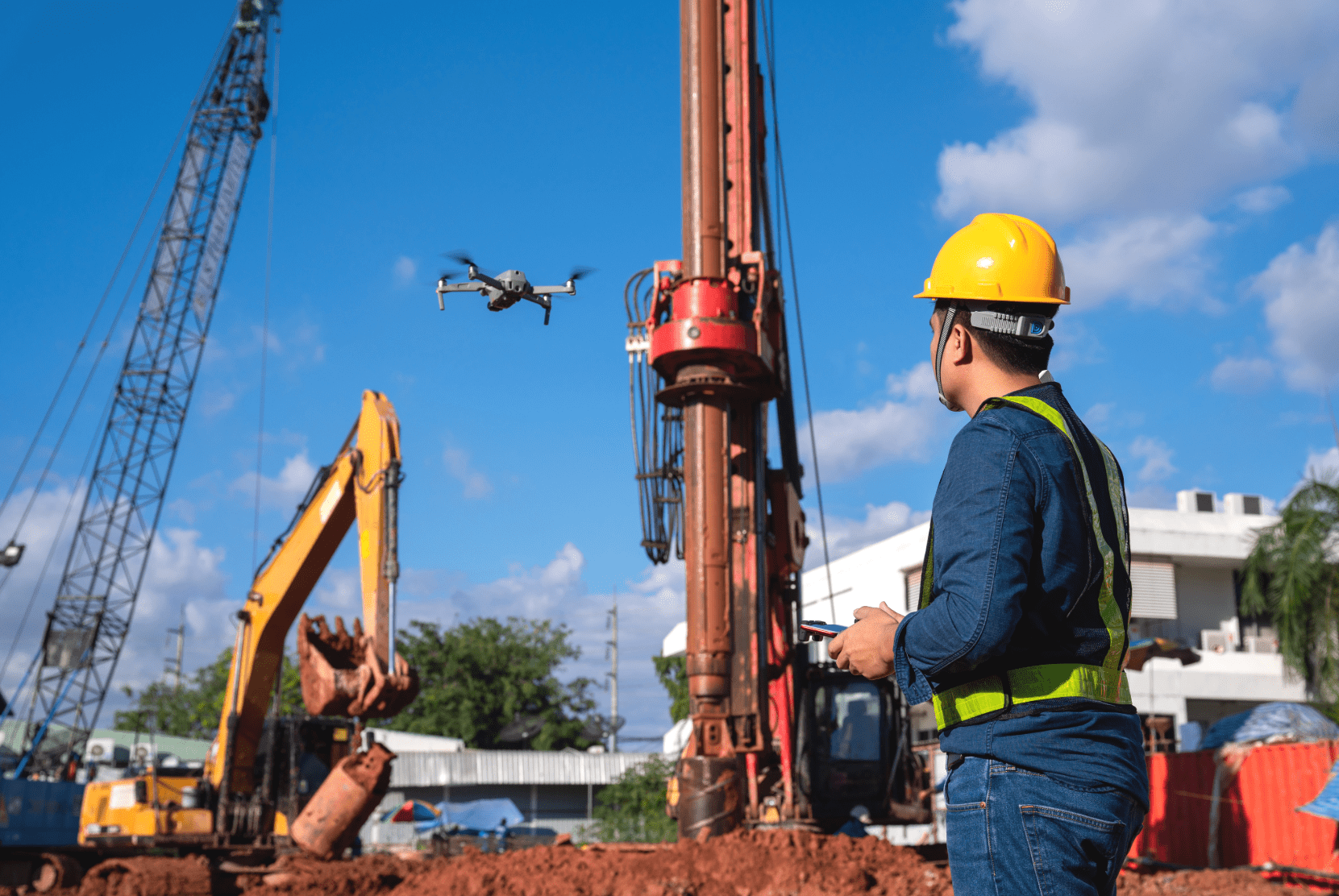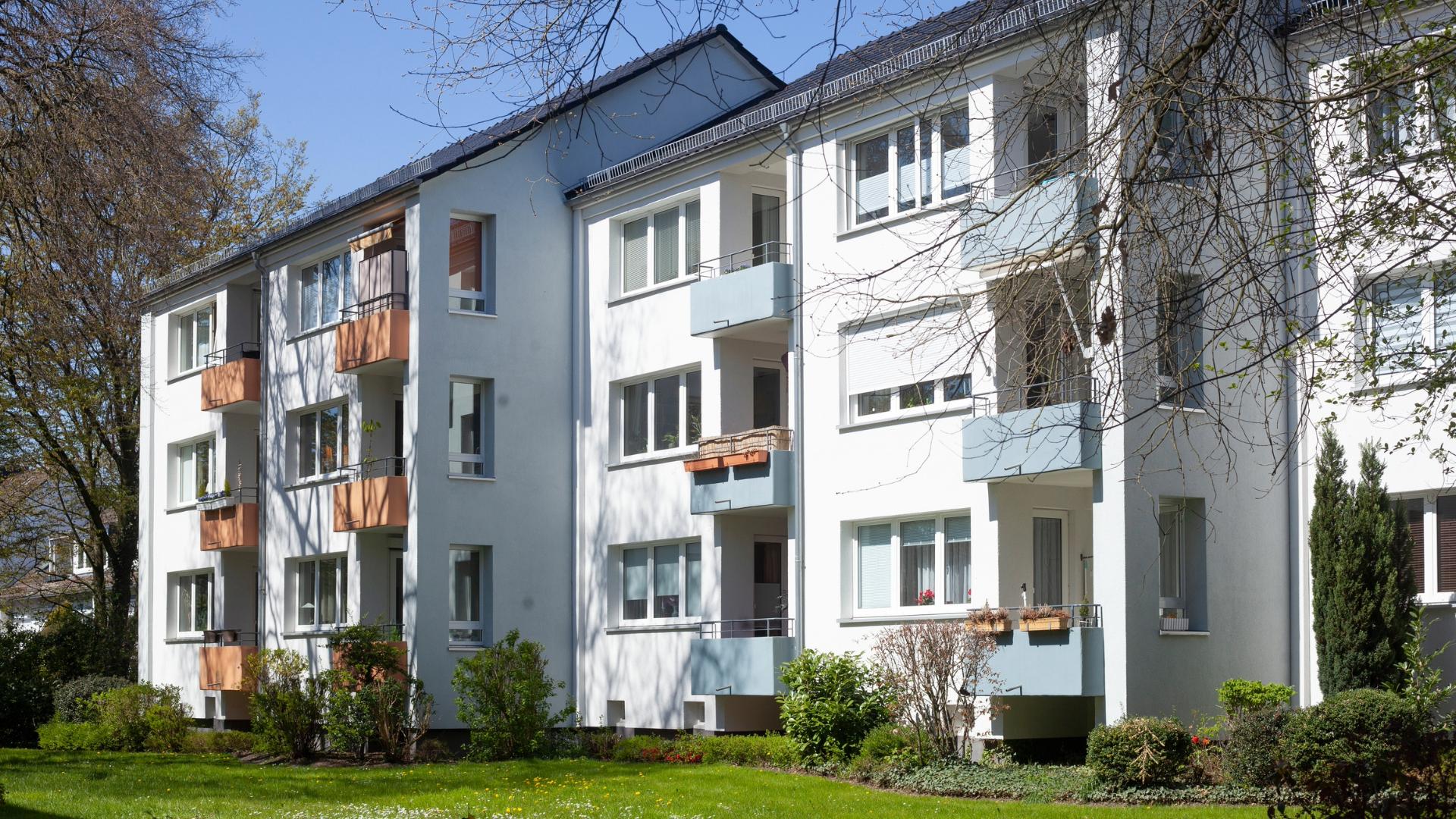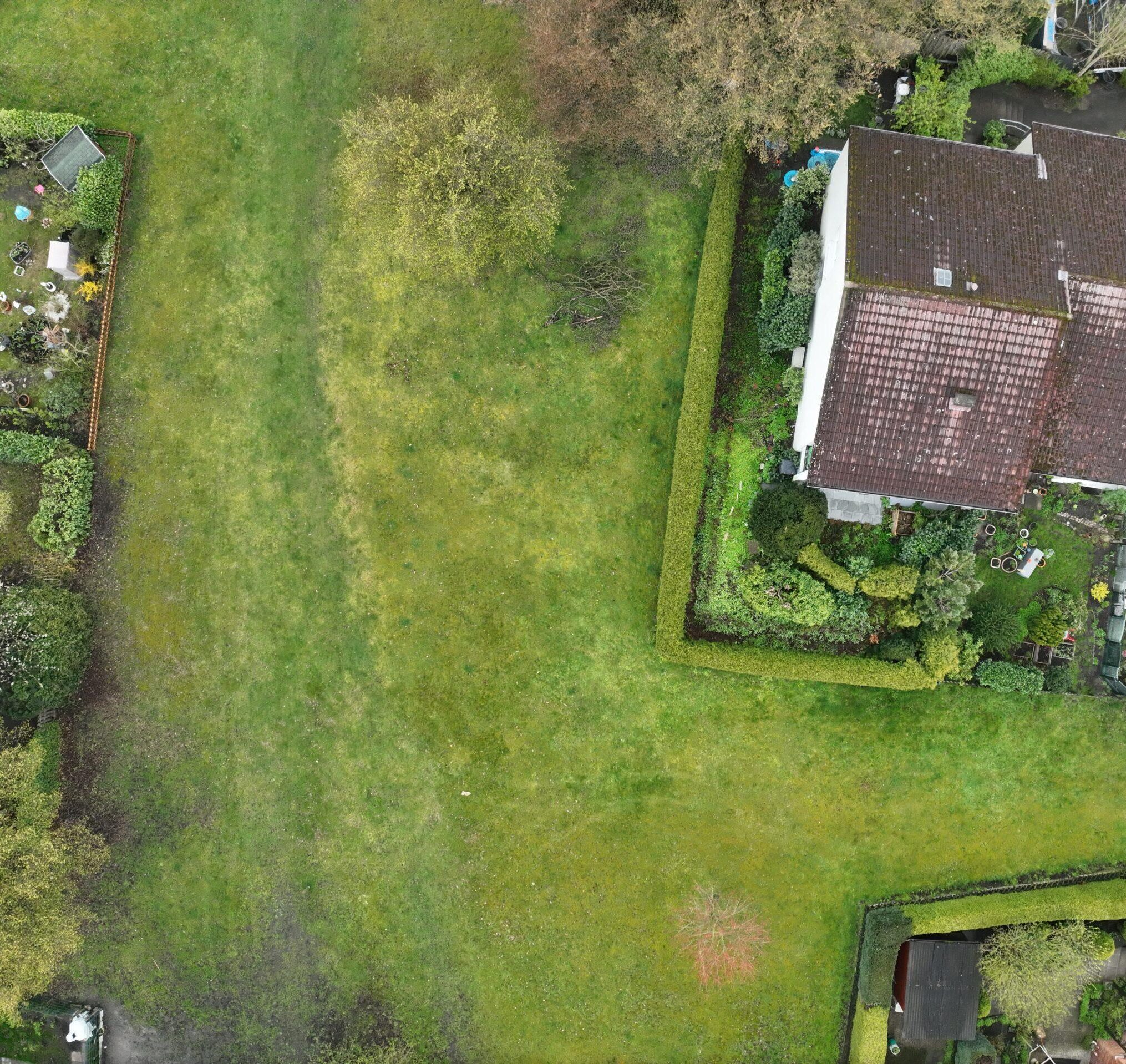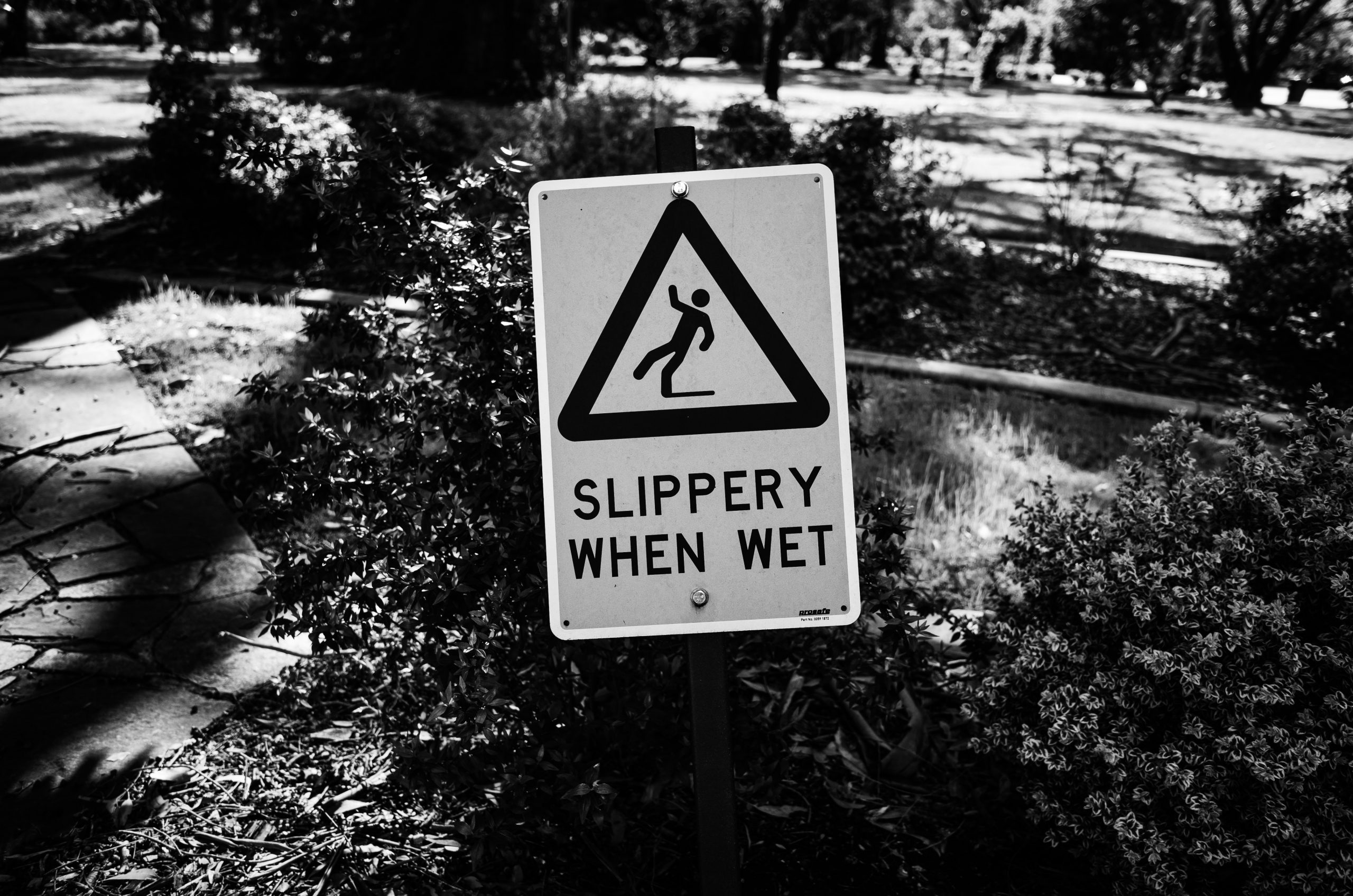Drones have revolutionized the surveying industry. They are often used in road, housing or open-cast mining. The advantages of the drone are manifold.
Benefits of drone deployments: Increased efficiency and quality with simultaneous cost reduction
The use of drones in surveying can save a lot of time. The larger the area to be surveyed, the more effective the drone is compared to a surveying technician using a tachymeter or GPS rover.
Different approaches to surveying with drones
While the surveying technician works at a walking pace (maximum 6 km/h), the drone can take pictures at 30 km/h or more. If the ground is almost impassable, the speed difference is even higher.
The drone takes many overlapping photos, which are then assembled by software into a whole georeferenced orthomosaic.
This technique is called photogrammetry.
The surveyor, on the other hand, only records measuring points. These must be recorded very precisely in order to avoid inaccuracies. The drone, on the other hand, records millions of measuring points, so that the point clouds have to be thinned out to some extent. Due to a large number of images, a 3D model can be created.
However, the tachymeter can only record measuring points, not area-wide images. This makes it possible to determine the size of the buildings. The drone images, however, allow the recording of the facades including all their irregularities, such as cracks, fractures, etc.
Results of photogrammetry
The photogrammetry method is used to create a 3D model. In this way, a digital twin of a building, for example, is created. By using georeferenced data, all sizes and proportions are true to scale. The models are created with the help of point clouds. At the end of the creation of a model, it is saved in a file format that can be read and processed, for example, by CAD software.
(Image of the whole area of the “Leipziger Spinnerei” compound. Image: ProCopter GmbH)
Orthophotos
Geometrically accurate maps can be created from aerial photographs thanks to georeferencing. These are mainly used in urban planning and development. In the past, such images were created with airplanes or satellites and were correspondingly expensive. By using drones, costs can be significantly reduced. In addition, the resulting orthophotos have a higher level of detail because drones fly at lower altitudes than airplanes or helicopters. They must take more pictures, but this results in a higher resolution of the overall picture.
Increased accuracy with multiple sensors
Drones for recreational use are usually equipped with fewer sensors than drones for professional use. DJI’s consumer devices already offer sophisticated optical sensors that can also detect obstacles, for example. GPS is also on board with the more expensive recreational drones, so that flight routes can also be flown automatically. However, professional drones go much further here. They offer, for example, the option of installing a thermal imaging camera for thermographic recordings in addition to the RGB camera. In addition, drones are equipped with RTK-GPS sensors for surveying. The RTK measurement allows accuracies of 1-2 cm and a resolution of <1cm/pixel. For comparison: orthophotos taken by airplanes offer a resolution of 20-40 cm/pixel.
However, drones that do not have RTK sensors can only achieve an accuracy of 5-10 cm if no control points have been created in advance. Depending on the level of detail required, a surveying technician with a tachymeter may be required. The tachymeter creates so-called ground control points (GCP), which must be created to determine the orientation of a measurement image. Surveying with a tachymeter is the most accurate method on the market. However, drones offer several other advantages.
Advantages of drones in rough terrain
In addition to improved measurement accuracy, the use of drones in surveying offers another advantage for surveying technicians: they no longer must walk the entire site. This also increases safety. Hazardous areas or places that are difficult to access can be flown over without risk for the surveyor. Especially in open-pit mining, this is a major safety benefit.
Practical example: Interview with Frank Lochau from ProCopter GmbH
In order to illustrate how a drone mission is carried out during a survey, we would like to outline an example. We had the opportunity to speak to Frank Lochau, Managing Director of ProCopter GmbH and Chairman of the Board of the German Association of Civilian UAVs (BVZD). ProCopter offers various drone services. These services range from surveying and thermography to event reportages and advertising films.
1. ProCopter GmbH offers numerous services with drones. What is currently in demand?
Frank Lochau (FL): At the moment, the focus of our orders is clearly on surveying. The focus here is clearly on the creation of 3D models. Further areas of application are the surveying of surfaces, terrain, and facades of buildings. This is closely followed by visual inspections with thermal imaging cameras of i.e. photovoltaic systems. Event reportages, such as weddings, usually only take place during the summer months. Images taken with the drone are in demand, but only as an extra to the actual reportage.
2. From which industries do your clients come from? Have there been any changes recently?
FL: Our clients increasingly come from the B2B sector. Most of our customers are from the energy, construction, and civil engineering sectors. For about one year we observe a rising interest in the industry. In addition, the marketing of drone manufacturers is increasing, which in turn is arousing interest in the individual industries to integrate drones into their work processes.
3. it is hard to imagine surveying without drones anymore. Can you tell us what the individual work processes are?
FL: For this, I would like to talk about the procedure for a recently completed job. There is a chimney on the premises of the “Leipziger Spinnerei” that needed to be measured. First, the customer and I agreed on what the customer wanted to achieve with the data collected. It is important to find out which accuracies should be maintained and in which resolution the data needs to be collected. We decided to take a lot of pictures during the flight so that also parts of the adjacent building were photographed. This is a common method for surveying with drones, as it creates a better spatial reference. Once the basic technical requirements had been agreed with the customer, flight planning could begin.
We have been using MAP2FLY for quite some time to check our flight routes. With just a few clicks, we get a list of all the laws and regulations that apply on the route and can thus directly weigh up whether a flight can be approved at all. In this case, MAP2FLY only indicated that it was an industrial area that could only be flown on with the permission of the owner. This was obtained and so nothing stood in the way of a flight permit. Explicit permission by the authorities is not necessary in this case, because there is a general decree for Saxony, which regulates the conditions for this case. Before the approval was requested, an appointment for the flight was made with the customer. Of course, a look at the weather forecast is obligatory for this.
4. What is the procedure on the day of the flight?
FL: On the day of the flight we usually meet the customer directly on site. In this case, the customer had the written permission of the owner of the plant with him. We also used a tachymeter to create around 30 measuring points on the chimney, as our customer wanted a 3D model that was very accurate.
The weather was also perfect so that we could start our flight. In this case, we created the flight plan with Pix4D and loaded it onto the drone to make the survey. The chimney itself was flown manually. This simplified the departure of the flight route. After the drone was done, the evaluation of the data could begin.
(Clouse-Up of the chimney. Image: ProCopter GmbH)
5. this is the perfect transition to our next question: What do you do with the resulting photos?
FL: The images are first transferred to a computer. On the computer, Adobe Lightroom is used to adjust the exposures of the individual images. We also me a lens correction and export the processed images. Processing can then begin. There are two different approaches. On the one hand, we can have the images rendered with a cloud provider. This is quite fast and cheap. Unfortunately, this kind of data generation is too inaccurate for some purposes. If the customer wants to get precise data, we create the 3D models ourselves. For this purpose, we have a photogrammetry software in which, in contrast to the cloud service, we can make many settings ourselves. We clean up point clouds, can adapt the evaluated data to the customer’s software and select the areas to be rendered ourselves. The choice of 3D model resolution depends on the customer’s polygon budget. Due to the more precise evaluation and the higher effort, the analysis by us is, of course, more cost-intensive than the cloud solution. But the advantage is the adaptability. Cloud services do not offer this possibility yet.
6. How does the use of the drone appeal to your customers?
FL: Our customers are very interested in our work. Many want to be present during the flight. When it comes to the results all our customers are really satisfied. The creation of 3D models is often completed quickly, and the high level of detail has convinced all our customers so far.
7. to what extent does MAP2FLY help you with your projects?
FL: MAP2FLY has revolutionized our work! Previously, we had to read (flight) maps and manually check whether there were official buildings on our flight routes that could not be flown over. Each route had to be checked, which cost up to 5 hours or more per flight. With MAP2FLY we can do complete planning in about 30 minutes. The pure check for bans and requirements is usually completed in just a few minutes.
We would like to take this opportunity to thank Frank for the interview!
We hope that we were able to give a small insight into the daily work with drones in surveying.
If you are interested in testing MAP2FLY, you can try our software for free.
The FlyNex Team






